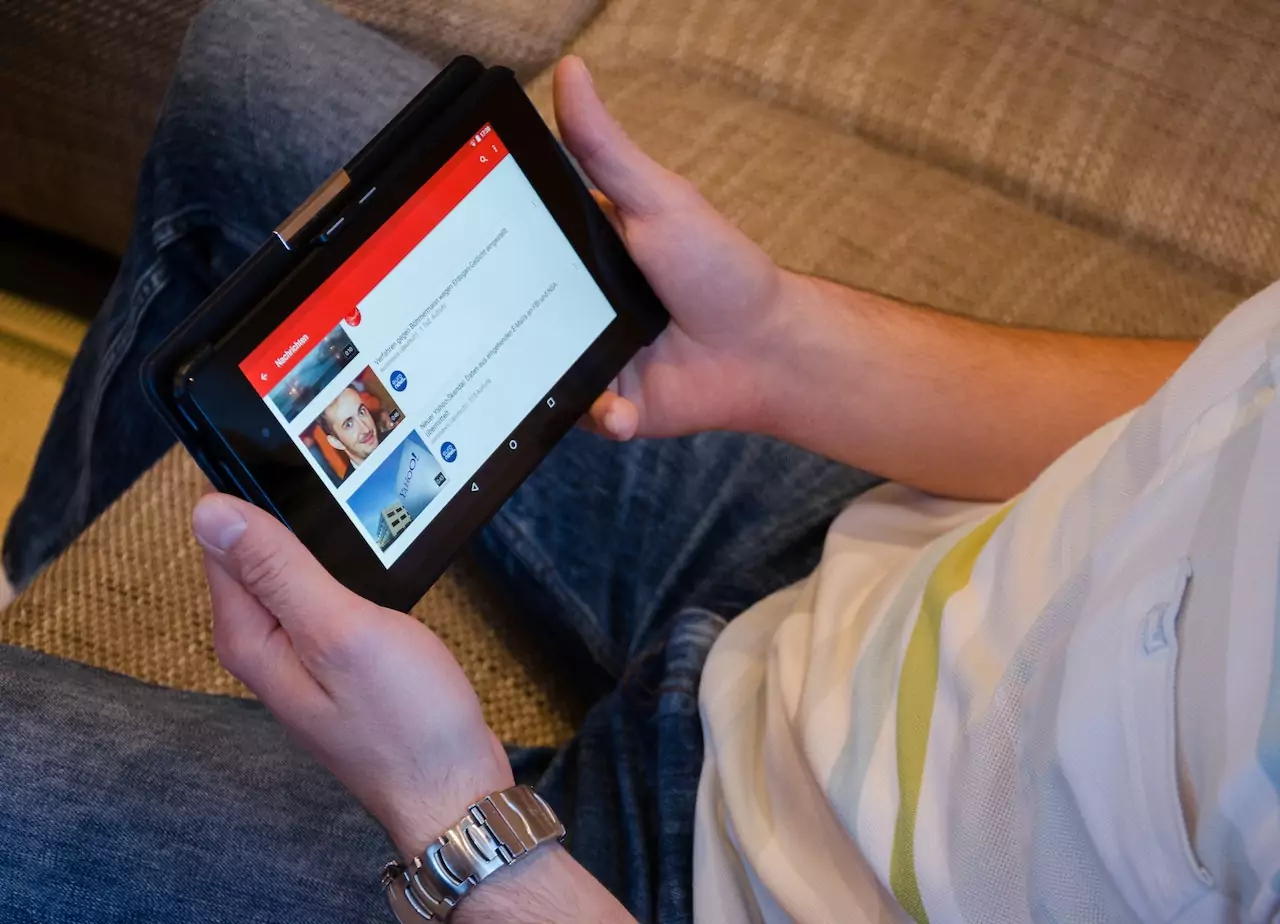Having a degree in graphic design what led you to start working in the augmented reality industry?
Okay, stay with me because this is going to make sense, but I think the two industries are completely aligned. To me, augmented reality (AR) is a natural outgrowth of graphic design, and better yet, it brings together my two passions – other than my kids – business and design.
Society has become more obsessed with visual communication as technology has evolved but attention spans have shortened. The smartphone took communicating in all sorts of directions visually – emojis, TikTok videos, animated GIFS (my personal favorite), etc. – and conveying your message quickly, effectively and creatively is critical to being heard. I believe my degree in graphic design helped to embrace and hone these communication skills.
Early on, I thought I’d be on the agency side of the business — designing magazine ads actually! But like so many others, the opportunities I was presented pulled to business and marketing.
I enjoy working with printed advertising as much as I do digital. I find beautifully designed static ads to be like a book vs. a movie — we all know which one is always better. I don’t find either mutually exclusive, and I believe that is because of my visual perspective.
Back in 2010, I started exploring animation and post-production video effects. Then, when I was first introduced to marker-based AR a couple of years ago, I couldn’t stop obsessing over it. For months, it just stayed planted in the back of my head because I knew what I had seen was the start of the future. Even now, we’re only still just breaking the surface.
It’s funny that the question separates media and augmented reality because in my opinion, AR is a form of media in the future. And there will be a lot of advertising in the AR world ahead of us because it is nimble, and it allows you to change messaging in real time, if circumstances demand it.
How did this lead you to join MNI Targeted Media?
I was given a recommendation by a previous coworker to join the team at MNI Targeted Media as a Graphic Designer, so circumstance is what brought me here. But I’d say the people and the opportunities and challenges to improve and develop the marketing support for our sales team and company are what keep me here. At that time, most of the design work was focused on sell sheets, premiums and internal events, but there was great potential to do more. There were new technologies and ways of communicating to support the sales team as well as promote the company and build brand equity. Now, I think we do all of it well, and I’d like to think I played a significant role in that.
What does a typical day look like for you?
If you asked me two or three weeks ago, it would have been a bit different, other than the typical morning routine of getting my daughter set up with her breakfast and morning show – typically yogurt and blueberries while watching Muppet Babies. Back then, there was a lot of traveling to talk in-person about the state of magazines and the critical role they play in an effective omnichannel campaign.
Nowadays, I try to start early before both kids are awake and the emails start flying. I do a lot of scanning of articles – obviously trying to stay knowledgeable about the state of COVID-19 in general and how it applies to advertising without getting overwhelmed by the reality of it. I’ve always subscribed to several e-newsletters that help in my curating process, but I also have Google Alerts set up around terms like Augmented Reality, Magazine Advertising, and Magazines to help me find the juicy tidbits before anyone else! My goal is to share at least one of these per day on LinkedIn to help build my own brand, but also to help keep our sales team informed of what’s going on out there and to give them relevant articles for their clients.
Of course, since the traveling and in-person meetings have taken a pause, I’ve been spending much of my time looking into new ways of communicating and presenting both to the sales team and to clients, as well as looking to improve internal processes and overall support for magazine sales. You can see, much of what I’ve learned as a graphic designer and in marketing has provided the foundation for what I’m doing today.
What does your work setup look like? (your apps, productivity tools, etc.)
Believe it or not, I’m a little all over the place. I use a lot of old school means; I burn through notebooks and post-its. My work area is cluttered with those notes and notepads, magazines, torn out and printed articles and white papers that are highlighted for facts, and all sorts of oddities and knick-knacks (I tend to collect things that others would find a bit weird).
But right now, I’m all about Slack and any add-ons I can find that integrate seamlessly with it (Evernote is one). I’m also loving anything cloud-based for storing and sharing – Dropbox and Google Drive being my go-to programs. When it comes to conducting meetings, I prefer video conferencing over standard calls, which again, Slack is very good at, but I’ve also been using Zoom, and – believe it or not – the HouseParty app! The video streaming works great, it’s easy to start a ‘meeting’, and you can always break into a game of Pictionary to add a little engagement and fun. For AR, I’m in After Effects a bit as well to generate alpha channel videos and basic editing for video streaming optimization.
What’s the problem that you’re passionately tackling with MNI Targeted Media at the moment?
The biggest problem right now is correcting the misperceptions surrounding magazines. I’ve spent a lot of time conducting research and analyzing why they represent the necessary tactile component of a successful omnichannel campaign. There’s data that proves its effectiveness as a standalone medium, but more importantly, shows just how effective it is at boosting digital ad performance. But unfortunately, the major shifts in consumption patterns of magazines have muddied the truth about what’s happening in the industry. I want to educate and set the record straight.
My overarching message is about balance – balance in media and strategy. We’re all so enamored by digital advertising because it perfectly reflects our instant gratification world, providing short-term metrics and the attribution that marketers gobble up. But that’s a short-sighted approach to brand building. Marketers need to take a more balanced approach to building brand equity, and magazines provide an important vehicle to warm potential consumers to your brand. Magazines set them up, and digital knocks them down. It’s the story of magazines uniting with digital, not fighting against it. Now if you want to take it one step further, add AR onto the magazine ad and you have a full-funnel advertising placement with the ability to take a reader from awareness to action in one sitting.
The coronavirus answer: delivering engaging, informative and enjoyable presentations virtually. I don’t think in-person meetings will ever be completely replaced, but I have a gut feeling that the majority of meetings in the future will be virtual and you will be transported to a conference room full of avatars (it’s happening already!).
What advice is essential to ensure for publishers to create a publication that will be a multi-sensory brand experience with their consumers?
The beauty of magazines is that they’re already multi-sensory. It’s why the medium is so effective for advertisers and enjoyable for readers. The simple act of turning the pages incorporates touch, sight, sound (page turn) and even smell (ink). And to me, that’s why magazines can survive in a digital-first world.
What AR can do, and why I think it’s so perfect for magazines, is create more of an experience for the viewer. With AR, you can overlay the elements of time and space to the editorial or advertising. Several publications have been reducing their frequency which equates to a longer life of each issue. Well if you add AR to the printed content, you can change that component throughout the life of the issue. Or, you could change it based on the physical location of the magazine. Better yet, you could do a combination of these and create a unique, memorable experience – “bring this ad to this location at this time for a special message or offer.” Do that, and you’ve brought a small, like-minded community together, engaging your brand in a way they’ll be sure to remember, and more importantly, share with others.
I think the key to widespread adoption has always been creating added value with AR. QR codes in the past yielded a terrible user experience. You had to go through multiple steps just to be taken to a web page. With smart codes and WebAR, content creators and advertisers are getting a lot better at making sure that what you get as the reader is worth the effort of engagement. And the best part is – it doesn’t have to be revolutionary or expensive to execute the creative – just unique to the situation. Make the experience something you couldn’t get by simply going online or in a standard digital environment. Utilize the select audience of magazine readers you’re reaching, overlay time and location and give them and experience no one else can get. People love limited editions and exclusives. Here’s the opportunity to capitalize on that.
Content from our partners
Can you tell us a bit more about the company’s agnostic approach while working with publishers and offering compelling and geo-targeted advertising inventory?
Being publisher agnostic is a big key to MNI’s continued success over the last 50+ years. It allows us to provide solutions for our clients — not sell inventory to them. People want to consume content when, where and how they prefer, so for a brand, that equates to taking an omnichannel approach in their advertising. However, you also need to be efficient; you can’t just spray and pray.
One of the biggest advantages MNI has is that we are so flexible in what we can offer because we’re not beholden to any one publisher or partner. This allows us to be consultative in our approach and provide the best plan possible for the client, not one in which we’re trying to squeeze square pegs into round holes. To maximize the efficiency and overall effectiveness of a campaign, you need to refine your target audience and overlay as many targeting tactics as possible to minimize waste.
MNI’s magazine offering does this incredibly well. We start with a highly valuable audience pool of magazine readers, contextually target them based on titles/editorial content, geo-target them to a DMA level, and then even creatively target with no-charge custom creative to that geo.
How does advertising during a recession help preserve a publisher’s brand?
MNI has written about advertising during a recession extensively and one thing we consistently share with advertisers regardless of what’s going on in the world is that the key to success is personalizing messaging. If you are providing relevant content that provides value, then people will listen. In a recession, publishers have a unique opportunity to be a constant in an otherwise evolving landscape. This is a comfort. Magazines – digital and print – are renowned and trusted by consumers. They are welcomed into homes, kitchens and bedrooms as well as in doctor’s offices etc., so they present a real opportunity to showcase messaging in targeted environments. And, if I can bring this back to where we started with our conversation on AR, if a print ad is enhanced with AR, then you’ve hit a homerun and can change messaging on a dime if need be.
Do you have any advice for ambitious digital publishing and media professionals looking to build their own product, not having a digital publishing background?
My advice would be to have a real passion for whatever you’re trying to accomplish or create, and find at least one person smarter than you to help. Passion will take you a long way, but without people like Maceo, Fred Wesley and Clyde Stubblefield, you’re just a guy screaming on stage.












